Exploring SaaS Applications: Insights and Trends

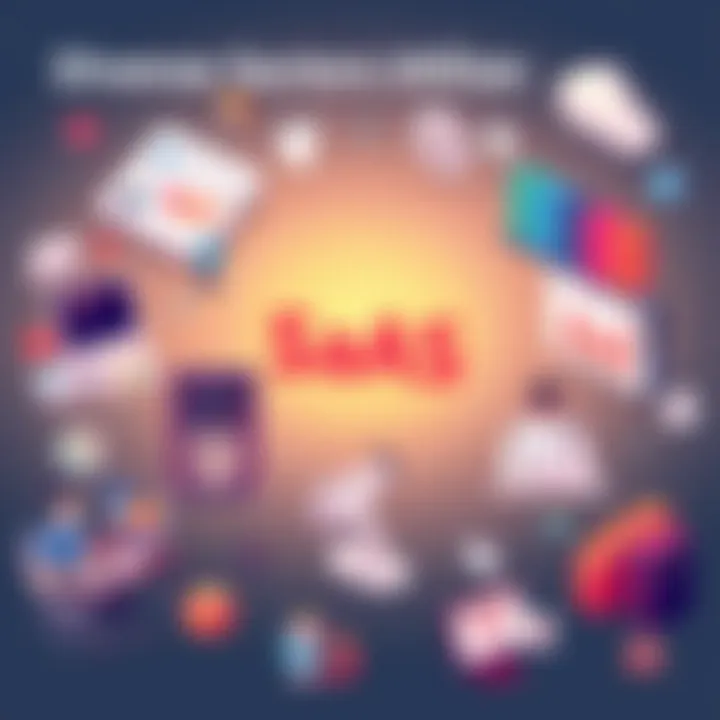
Intro
Software as a Service (SaaS) applications have taken the digital landscape by storm. Gone are the days when users had to race against the clock to install software or manage countless licenses. Instead, we now live in an era where applications are merely a browser tab away, offering unprecedented flexibility and functionality. The influence of SaaS spreads across diverse industries, from education and healthcare to finance and marketing, shaping how businesses operate and enhancing productivity for users worldwide.
This article aims to provide an in-depth exploration of SaaS applications, drawing attention to both well-known giants like Salesforce and niche players like Airtable. By dissecting various examples, we will shed light on their functionalities, advantages, and challenges. Therefore, whether you’re an experienced developer, tech-savvy user, or just dipping your toes into the realm of SaaS, this guide will offer insights to elevate your app experience.
In the following sections, readers will find detailed analyses of core features, step-by-step usage guides, expert tips, common hurdles, and comparisons with similar applications. Let’s dive into the fascinating world of SaaS and discover how these tools can revolutionize both business operations and individual productivity.
Understanding SaaS Applications
SaaS, or Software as a Service, represents a fundamental shift in how software is delivered and consumed. In today’s fast-paced digital world, understanding SaaS applications is not just an option but a necessity for businesses and individual users alike. This section lays the groundwork for a comprehensive exploration of SaaS, highlighting its significance in tailoring software solutions to modern needs.
Definition and Core Principles
At its core, SaaS refers to software that is hosted in the cloud and accessed via the internet, rather than installed on local machines. This model allows users to engage with applications without the headache of downloading or maintaining the software themselves. Imagine not having to worry about updates or patches; it’s all taken care of behind the scenes.
The fundamental principles of SaaS include:
- Accessibility: With just an internet connection, users can access SaaS applications from anywhere on any device, enhancing the flexibility of work environments.
- Cost efficiency: Typically, SaaS applications operate on subscription-based pricing, which can significantly reduce upfront costs compared to traditional licenses.
- Multi-tenancy: This architecture allows multiple users to share the same application while keeping their data isolated, providing robust security and efficient resource management.
How SaaS Differs from Traditional Software
Traditional software often requires hefty installation processes and ongoing maintenance. Consider a company’s IT department struggling to keep systems updated, troubleshooting issues or even preparing for software migrations. SaaS eliminates these hurdles. Users benefit from seamless updates without any downtime, something that traditional systems can rarely boast.
Here are a few key distinctions that illustrate how SaaS outshines traditional software:
- Deployment Speed: SaaS can be deployed within hours or days, while traditional software can take weeks.
- Scalability: SaaS solutions easily adapt to fluctuating business demands, unlike traditional software that often requires comprehensive reconfiguration to scale.
- User Experience: SaaS applications personalizes user experience based on real-time data, while traditional software may lack such dynamic capabilities.
Evolution of SaaS Models
The evolution of SaaS is not just a tale of technological advancement, but of understanding user needs and market demands. Originally, the concept emerged in the late 1990s, with companies beginning to offer their services over the internet. Over time, improvements in internet infrastructure, particularly broadband speeds, have driven the expansion of SaaS in myriad industry sectors.
In recent years, new models have emerged to cater to diverse user requirements, including:
- Horizontal SaaS: These applications serve a wide range of industries with general needs, such as accounting or human resources.
- Vertical SaaS: Tailored for specific industries, vertical SaaS addresses unique workflows in sectors like healthcare or real estate.
- Freemium Models: Many providers now offer a basic version free of charge, encouraging users to upgrade for advanced features – effectively lowering the entry barrier.
Understanding these facets of SaaS applications not only underscores their growing relevance but also equips users and businesses to make informed choices regarding their software needs. SaaS is more than just a trend; it's about reshaping how we interact with technology to streamline operations and improve outcomes.
Characteristics of SaaS Applications
The characteristics of Software as a Service (SaaS) applications are essential in understanding how these tools fit within the modern tech landscape. They highlight not just the functionality of these apps but also the fundamental shifts in how software is delivered and used. The unique attributes of SaaS applications present numerous advantages and challenges that are crucial for both developers and users alike. Here, we will delve into three main characteristics: Multi-Tenancy Architecture, Subscription-Based Pricing, and Cloud-Based Accessibility.
Multi-Tenancy Architecture
At the heart of SaaS applications lies the concept of multi-tenancy architecture. This means that a single instance of the software serves multiple users or tenants, isolating each user’s data and experience while sharing the underlying infrastructure. This architecture is critical for efficiency, as it allows for lower operational costs and simplified updates.
Consider this structure like an apartment building—each apartment represents a tenant, with separate living spaces but shared construction and amenities. This characteristic not only optimizes resource usage but also fosters easier maintenance and upgrades, as developers roll out changes across all tenants simultaneously.
However, multi-tenancy does bring its own set of intricacies. Ensuring data security and compliance can become a tightrope walk, especially as organizations juggle various regulations. Users must trust that their data is safe from breaches and that their experiences will not be compromised by issues arising from other tenants.
"The shared nature of multi-tenancy fosters collaboration but mandates a heightened focus on security protocols."
Subscription-Based Pricing
Another key defining feature of SaaS applications is the subscription-based pricing model. This approach contrasts sharply with traditional software sales where one-time purchases are the norm. Instead, SaaS applications charge users a recurring fee, usually monthly or annually.
This model translates to significant benefits: it lowers the barrier to entry for businesses since they don't need to invest large sums upfront. Instead, they can opt for plans that fit their needs, including bundles and tiered services that allow for scalability. For instance, a small startup can start with a basic plan and upgrade as they grow.
This pricing strategy often includes customer support, maintenance, and regular updates, making it a comprehensive solution. However, users must be cautious of costs over time, as those seemingly small monthly fees can stack up to a considerable financial commitment in the long run.
Cloud-Based Accessibility
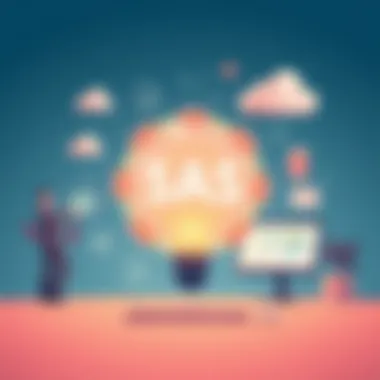
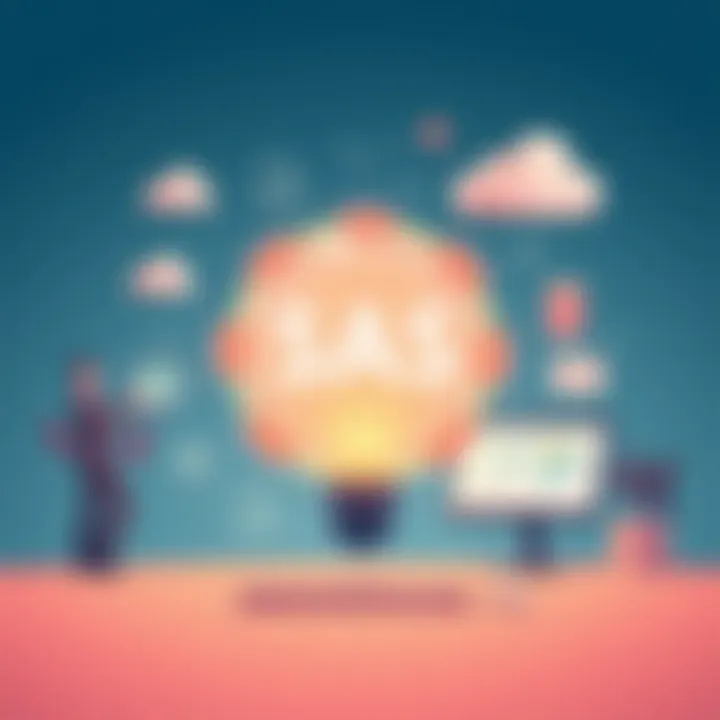
The cloud-based accessibility of SaaS applications truly embodies the modern approach to software usage. Users can access their applications from any device with an internet connection, whether it's a laptop, tablet, or smartphone. This setup grants unparalleled flexibility, enabling teams to work remotely without the cumbersome need for specific hardware or software installations.
Imagine a team of marketers based in different corners of the globe working together seamlessly on platforms like HubSpot or Trello. This characteristic not only enhances productivity and collaboration but also encourages a culture of innovation and responsiveness as teams can adapt to changes swiftly.
However, reliance on internet connectivity is a double-edged sword. In regions where access is inconsistent, the potential for disruption looms large. Organizations must take care to ensure they have reliable internet service or contingency plans to manage any hiccups in connectivity.
In summary, the characteristics of SaaS applications set the stage for a transformational approach to software in today’s business environment. Each element—from multi-tenancy architecture to subscription models and cloud accessibility—carries its own weight in shaping user experiences and operational efficiencies, catering to a wide audience of app developers, tech-savvy users, and newcomers keen to navigate the digital landscape.
Categories of SaaS Applications
In the landscape of modern business, the categories of SaaS applications play a crucial role. By segmenting these solutions into discernible categories, users can navigate the diverse ecosystem more effectively. Each type serves distinct purposes and addresses specific business needs. This comprehensive understanding is not only beneficial for app developers looking to create modes of efficiency but also imperative for tech-savvy users and beginners who wish to bolster their productivity through software.
Business Management Software
Business management software encompasses a wide range of applications designed to streamline operations. This can involve tools for project management, workflow automation, and performance tracking. For instance, platforms like Asana and Trello empower teams by providing visual task management and collaborative features. They help businesses keep everyone on the same page, ensuring accountability and clarity in task assignments. The main benefit here lies in enhancing productivity while reducing the chances of task overlap. Notably, automation of routine tasks frees up human resources, allowing employees to focus on strategic initiatives.
Customer Relationship Management
Customer relationship management (CRM) systems are vital for organizations aiming to improve client interactions. Solutions like Salesforce and HubSpot deliver a comprehensive view of customer journeys. They capture details of interactions and preferences, enabling businesses to tailor their approach. Having access to this data can turn cold leads into loyal clients. The advantages of implementing a CRM are substantial. They provide businesses with analytical insights to shape marketing strategies and improve customer retention—all across the digital landscape.
Human Resources Management Systems
Human resources management systems (HRMS) are crucial for managing personnel and optimizing employee experiences. Applications such as BambooHR and Workday offer solutions that range from tracking applicant progress to managing payroll effectively. By digitizing the HR processes, organizations can improve efficiency and accuracy. Automation in HR can also ensure compliance with labor laws, easing a significant burden off HR teams. This sophistication leads to better talent acquisition and employee satisfaction, directly impacting performance.
Finance and Accounting Solutions
When it comes to financial management, businesses benefit from SaaS applications that simplify complex accounting tasks. Programs such as QuickBooks and Xero provide essential tools for invoicing, expense tracking, and financial reporting. These applications not only save time but also reduce the likelihood of errors that can occur with traditional methods. Being able to access real-time financial data aids businesses in making informed decisions and maintaining healthy cash flows—an important aspect that can lead to sustainability and growth.
Collaboration Tools
Collaboration tools form an integral part of the SaaS spectrum, especially considering the rise of remote work. Applications like Slack and Microsoft Teams enhance communication among team members, allowing seamless file sharing and project discussions. Effective collaboration tools lead to reduced silos within organizations and encourage a culture of teamwork. The long-term outcome here is a more adaptive workforce ready to tackle challenges without traditional barriers that hamper communication.
In essence, understanding these categories empowers businesses to make informed choices about the SaaS solutions that best suit their needs, enabling them to harness the full potential of technology to work smarter in an evolving market.
Popular SaaS Applications
In the swiftly evolving landscape of digital tools, Popular SaaS Applications have emerged as game-changers for businesses and individuals alike. These software solutions, offered through the cloud, provide a plethora of functionalities tailored to enhance productivity and streamline operations. As organizations grapple with the need for efficient and cost-effective systems, these applications offer scalable solutions that meet diverse user requirements. Moreover, their accessibility from anywhere with an internet connection has solidified their importance in today’s work environment.
Salesforce: A Leader in CRM
Salesforce stands tall as a titan in the realm of Customer Relationship Management (CRM). By putting customer needs at the forefront, it allows companies to foster relationships with existing clients while nurturing potential leads. Salesforce offers an extensive suite of tools such as lead tracking, sales forecasting, and customer analytics. These features enable businesses to make informed decisions, thus increasing conversion rates. Additionally, its flexibility means businesses can customize it to fit their unique processes, ultimately leading to enhanced user experiences. The integration capabilities with countless third-party applications further amplify Salesforce's versatility, making it not just a CRM but a comprehensive business management tool.
Slack: Enhancing Team Collaboration
Slack has revolutionized how teams communicate and collaborate. Gone are the days of clogged email inboxes and tedious chain responses. This application breaks down communication silos and enables real-time conversation streams, allowing teams to stay in the loop effortlessly. With channels dedicated to specific projects or topics, information is easily accessible and organized. Slack also supports file sharing and integrates with other tools, creating a seamless workflow. This ensures that team members are on the same page, thus fostering collaboration and productivity. The platform's ability to tailor notifications helps users filter through the noise and focus on what truly matters.
Zoom: Revolutionizing Communication
Zoom has become synonymous with virtual meetings. Its user-friendly interface, combined with robust features like screen sharing, breakout rooms, and webinars, caters to a wide array of needs for both businesses and educational institutions. The ability to connect with people globally, regardless of location, has transformed traditional methods of communication. Zoom’s crystal-clear video and audio quality facilitate better discussions, while tools like virtual backgrounds and filters make meetings a bit more enjoyable. In a world still adjusting to remote and hybrid work scenarios, Zoom has proven invaluable for maintaining connections and collaboration.
Dropbox: Cloud Storage Simplified
Dropbox has simplified the way files are stored and shared online. With a user-friendly interface, it enables users to upload files directly from their devices, providing easy access to important documents wherever they are. One major advantage is the ability to collaborate in real-time with team members, allowing for quick updates and seamless sharing. Dropbox also offers advanced control over file permissions, ensuring sensitive information is shared securely. As businesses accumulate more data, a reliable cloud storage solution like Dropbox becomes essential for efficiency and organization.
QuickBooks: Streamlining Finances
QuickBooks is often deemed the go-to financial management software for small to medium-sized businesses. It encompasses a variety of features, including invoicing, expense tracking, and payroll management. This comprehensive application allows users to gain insights into their financial health through clear reporting tools. By automating tedious tasks, QuickBooks frees up time for business owners to focus on growth and strategy rather than getting bogged down in numbers. Its integration capabilities with other essential business tools ensure that financial data flows smoothly across platforms, promoting coherence and accuracy.
"Using SaaS applications isn’t just about efficiency; it's about transforming how we think about technology in business."
Benefits of SaaS Applications
Software as a Service (SaaS) applications have transformed the way organizations operate in today's fast-paced digital landscape. As businesses increasingly rely on technology for their everyday needs, understanding the benefits of these applications becomes paramount. In this section, we’ll take a closer look at the key advantages of adopting SaaS applications, discussing their implications on cost, scalability, and maintenance. These factors not only influence decision-making for tech-savvy users and app developers but also shape the direction of entire organizations.

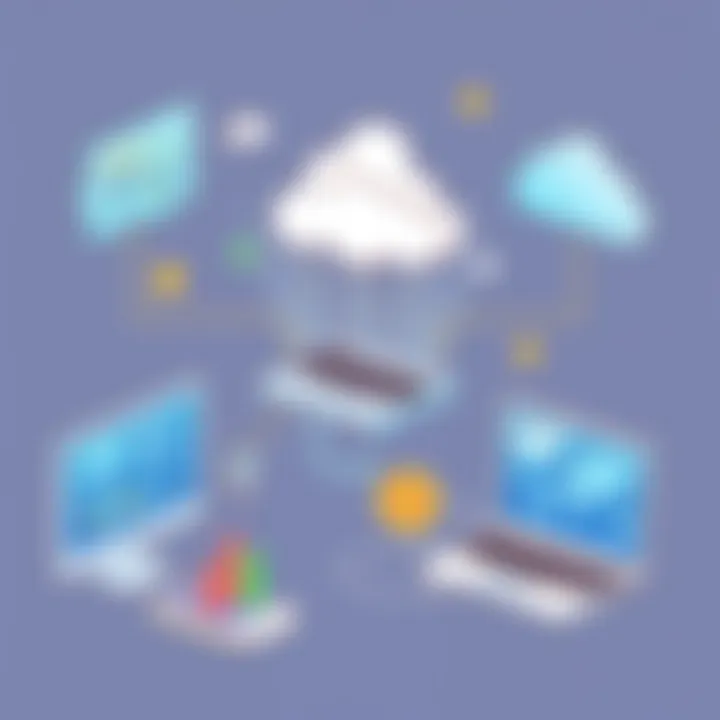
Cost Effectiveness
Cost is often the first thing that springs to mind when discussing benefits. SaaS applications typically follow a subscription-based model, allowing businesses to pay-as-you-go rather than committing to hefty upfront costs associated with traditional software. This model means that organizations can allocate their resources more efficiently, focusing on core operations instead of spending on licensing fees and hardware.
Moreover, savings can propagate through reduced IT overhead. SaaS providers handle upgrades and maintenance—but the savings don't just stop there. Businesses no longer need to have significant on-site infrastructure, which cuts down on energy costs and the need for specialized IT personnel. Overall, the financial implications of implementing SaaS solutions can be profound, especially for startups and small businesses looking to maximize every dollar.
Scalability and Flexibility
The modern business environment is dynamic, often requiring quick pivots in operations and strategies. SaaS applications shine in this arena by providing flexibility and scalability that traditional software often cannot match. Organizations can easily adjust their subscription levels based on their current needs; adding or dropping users or features in response to changing demands is just a few clicks away.
This is particularly important for companies facing seasonal fluctuations or those in rapid growth phases. With SaaS, they can scale infrastructure without the common headaches. For instance, imagine a small marketing agency that suddenly receives a big account, demanding intensive collaboration. The agency can swiftly ramp up its use of a SaaS collaboration tool to manage the increased workload without worrying about installation and setup times.
Automatic Updates and Maintenance
Managing software updates can feel like a never-ending chore, but one of the significant perks of SaaS applications is that updates happen automatically. The responsibility for installing updates lies with the vendor, which alleviates a significant burden for users. This means that organizations are always equipped with the latest features and security patches without requiring manual intervention.
Such automated maintenance ensures that the software remains robust and secure, reducing the risk of falling behind competitors who might have better tools at their disposal. Users can concentrate on their core activities without getting sidelined by tech troubles. When discussing the long-term health and usability of software, every detail matters, and the convenience of automatic updates cannot be overstated.
"In a world where technology evolves at lightning speed, having a SaaS application ensures that your tools are always current, letting you focus on creativity and strategy rather than maintenance."
The collective benefits of cost-effectiveness, scalability, and automatic updates create a strong case for organizations to embrace SaaS applications. This not only streamlines operations but also allows for innovative growth trajectories by leveraging the full potential of modern technology.
Challenges Associated with SaaS
SaaS applications have transformed the way businesses operate and individuals interact with software. However, as with any technological solution, they come with their own set of challenges. Understanding these issues is crucial for organizations looking to maximize the benefits of SaaS while mitigating risks. This section dives into three significant challenges associated with SaaS: data security concerns, dependence on internet connectivity, and integration with existing systems.
Data Security Concerns
When companies transition to SaaS, one of the first things that spring to mind is data security. SaaS providers are responsible for storing and managing sensitive data, all of which can potentially be compromised.
It's essential to consider the following elements:
- Compliance with Regulations: SaaS applications must comply with various data protection regulations, such as GDPR or HIPAA. Failing to do so can lead to severe penalties.
- Data Encryption: A well-designed SaaS solution should always implement strong encryption for data at rest and in transit. Neglecting these security measures can expose personal and business information to cyber threats.
- Vendor Security Practices: It’s not just about delivering an app – understanding a provider’s security posture gives insight into how they protect user data.
In today’s data-driven landscape, companies must prioritize stringent security evaluations when considering SaaS solutions, otherwise, they could be setting themselves up for disasters like data breaches.
Dependence on Internet Connectivity
The reliance on internet connectivity is another significant hurdle. SaaS applications are hosted in the cloud, which means uninterrupted internet access is essential for optimal functionality. Here are some considerations:
- Downtime Risks: If an organization experiences internet outages, the impact on productivity can be profound. Employees cannot access crucial applications, which can lead to delays in services and frustration.
- Bandwidth Limitations: A slow or unreliable internet connection can hamper the performance of SaaS apps. The quality of experience often hinges on the capacity of the internet connection available, turning the workplace into a bottleneck.
- Fallback Solutions: Companies need to develop contingency plans for these instances. This might include offline capabilities or local backups to ensure work can continue even in adverse conditions.
Integration with Existing Systems
SaaS applications do not operate in isolation; they require integration with existing frameworks and systems already in place. This can often lead to a convoluted process. Key points include:
- Compatibility Issues: Not all SaaS products integrate seamlessly with legacy systems. Companies might face hurdles when trying to get new software to communicate with older applications, consuming valuable time and resources.
- Customization Needs: Often, businesses need customized solutions to make SaaS products fit their unique processes. This can lead to additional implementation costs and longer deployment times.
- Consideration of API Limitations: Prior to selecting a SaaS provider, it's vital to examine how robust their APIs are. Poor or limited API options can hinder integration efforts, creating more headaches for developers.
In summary, while SaaS offers many transformative benefits, becoming aware of these challenges allows businesses to strategize effectively, ensuring that they can harness the full potential of the technology.
To delve deeper into these issues, you can refer to resources like Wikipedia on Cloud Computing or Britannica on Cybersecurity.
Evaluating SaaS Solutions
In today's rapidly evolving digital landscape, evaluating Software as a Service (SaaS) solutions is no longer just a good idea; it's a necessity. Each SaaS application boasts its unique features and benefits, but when you’re in the thick of it, how do you decide which solution best fits your needs? This section will guide you through the process of evaluating SaaS applications, highlighting what you should keep an eye on to make an informed decision. Whether you’re a developer working on integrating a new tool or a user attempting to boost productivity, understanding how to evaluate these tools can lead to significant advancements in efficiency and effectiveness.
Identifying the right SaaS solution means aligning it with your business requirements. Without careful evaluation, you risk selecting a tool that might not fulfill your needs, ultimately leading to wasted time and resources. To sharpen your decision-making skills, focus on the following critical components:
- Functionality: Does the software offer the capabilities you need?
- Usability: Is it user-friendly, or will you need extensive training?
- Integration: How easily can it fit into your existing systems?
- Scalability: Can it grow with your business objectives?
- Cost-Effectiveness: Will it provide good value in relation to your investment?
Taking these into account can set the stage for a thoughtful assessment of potential SaaS applications.
Key Features to Consider
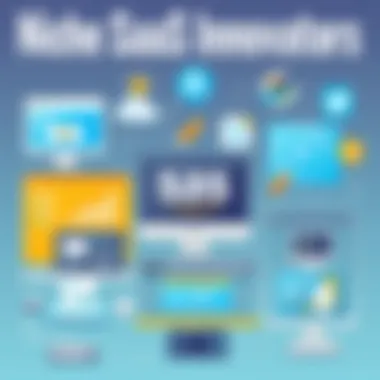
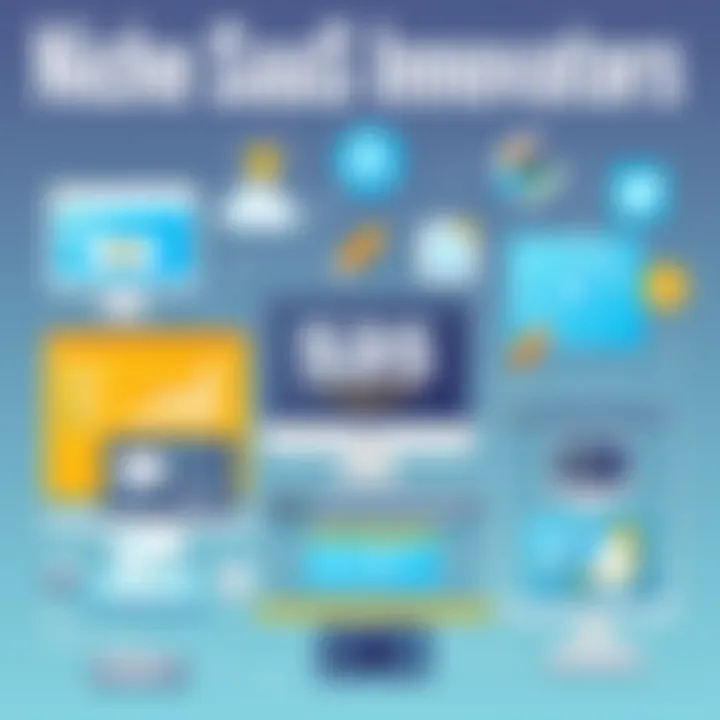
When you're on the hunt for the right SaaS solution, there are several key features that can guide your evaluation.
- Customization Options: Each organization has unique processes. A customizable application provides flexibility, allowing you to adjust settings and features according to your specific needs.
- User Support Capabilities: Verify if the vendor offers sufficient customer support. Reliable support could save you from unnecessary downtime if technical issues arise.
- User Experience and Interface: A clean, intuitive interface goes a long way in ensuring everyone can use the tool without frustration. Evaluate whether a tool looks appealing and makes workflow seamless.
- Data Security Measures: Since data vulnerabilities are a hot topic nowadays, be sure to dig into how the vendor safeguards user information. Security certifications and compliance can be a telling sign.
- Performance and Uptime Track Record: Speed matters. Check what the service levels are and whether they have a history of downtime. Frequent outages can be a deal-breaker.
Incorporating these key features into your evaluation process will help ensure you choose a SaaS solution that truly enhances productivity.
Assessing Vendor Reliability
The reliability of the vendor behind a SaaS application is just as critical as the software itself. A trustworthy vendor is more likely to offer consistent updates and maintain a secure, operational service. Here’s how you can assess vendor reliability:
- Reputation in the Industry: Look for reviews, case studies, and customer testimonials. Did they receive awards? Are they part of a reputable network?
- Experience and Track Record: Evaluate how long the vendor has been in business. Longevity can often be a good indicator of reliability. Companies that have stood the test of time have usually mastered the art of delivering quality service.
- Financial Stability: Understanding their financial background may give you an idea of whether they will be around long-term. A financially unstable company could pose risks for your business if they shut down unexpectedly.
- Compliance and Certifications: Vendors that follow industry standards and have the right certifications provide an added layer of security. It signals their dedication to quality and performance.
Future Trends in SaaS
The landscape of Software as a Service is changing faster than a cat on a hot tin roof. As companies strive to keep up with the rapid pace of technological advancements, it becomes crucial to explore the future trends that are set to redefine SaaS applications. These trends not only offer new opportunities but also present significant challenges for app developers and users alike. The integration of advances, such as artificial intelligence, the emergence of industry-specific solutions, and the rise of low-code platforms, are reshaping the way businesses operate and interact with technology.
Artificial Intelligence Integration
Artificial intelligence, often called AI, is carving a niche within the realm of SaaS applications. Just consider how predictive analytics can help forecast sales trends or customer behavior – this ain't just a pipe dream anymore. AI is being utilized to enhance the user experience, automate routine tasks, and provide deeper insights from data analytics. By employing machine learning algorithms, SaaS applications can continuously learn and improve their services. For instance, tools like Salesforce Einstein leverage AI, seamlessly integrating with sales processes to provide insights that empower sales teams to perform better.
The benefits of incorporating AI into SaaS are manifold:
- Personalization: Tailoring user experiences based on preferences or past behavior.
- Automation: Reducing the need for manual intervention in routine tasks.
- Decision Support: Offering actionable insights drawn from massive datasets.
However, the reliance on AI raises some eyebrows when it comes to data privacy and security. As businesses increasingly depend on AI-driven solutions, having robust data protection strategies will be a must.
Industry-Specific Solutions
Gone are the days of one-size-fits-all SaaS solutions. Nowadays, companies are waking up to the fact that tailored applications can meet specific needs more effectively than generic ones. The trend toward industry-specific SaaS is like discovering that your favorite shirt comes in a cut that fits just right.
Different industries—like finance, healthcare, and retail—have unique demands. For example, SaaS applications in the healthcare sector need to comply with regulations like HIPAA. Tools designed specifically for medical offices make scheduling, billing, and patient management a whole lot easier to navigate.
When businesses adopt targeted SaaS solutions, they can enjoy advantages such as:
- Streamlined Processes: Enhanced workflows that cater to particular business activities.
- Increased Efficiency: Tools designed for specific tasks reduce the learning curve.
- Better Compliance: Compliance is baked into the software, reducing legal headaches down the road.
The Shift Toward Low-Code Platforms
The emergence of low-code platforms is another game changer in the SaaS world. These platforms democratize app development, allowing individuals with minimal coding experience to create functional applications. Think of it as turning complex cooking recipes into simple meal kits—more people can whip up something delicious without needing to be a chef.
The rise of low-code tools—like OutSystems or Mendix—enables businesses to:
- Accelerate Development: Faster time to market with simpler tools and workflows.
- Enhance Collaboration: Different teams can work together seamlessly through visual development.
- Lower Costs: Reduction in development expenses as fewer specialized developers are needed.
However, it’s essential to note that while low-code platforms are beneficial, they’re not without limits. Organizations must still have a strategy in place to manage and maintain these apps as they grow and evolve.
"As software development continues to evolve, keeping an eye on these trends is the best way for organizations to stay ahead of the curve."
In summary, the future of SaaS applications is shaping up to be dynamic, with advancements in artificial intelligence, the emergence of specialized solutions, and the transformative potential of low-code platforms. It's clear that businesses must be ready to adapt to these innovations to stay relevant in an ever-evolving market.
Finale
The conclusion of this article underscores the significance of Software as a Service (SaaS) applications in today’s digital landscape. As organizations increasingly shift toward cloud-based solutions, understanding the ins and outs of SaaS becomes a necessity rather than a luxury. The benefits — from reduced costs and enhanced flexibility to automatic updates — make it an appealing choice for businesses across all sectors. However, it is equally essential to weigh these advantages against potential challenges like data security and dependency on internet connectivity.
Recap of Key Insights
Throughout this exploration, key insights have emerged that highlight the transformational power of SaaS applications:
- Accessibility and Convenience: SaaS applications allow users to access their software from any device with an internet connection, facilitating work-from-anywhere policies that many companies are adopting today.
- Cost Efficiency: Traditional software often involves hefty upfront costs for licenses and hardware. With SaaS, organizations typically pay a subscription fee, making budgeting more predictable.
- Automatic Updates: This reduces the need for IT departments to manage software installations and ensures that users always have access to the latest features without any hassle.
- Scalability: Companies can adjust their services as needed, easily adding or removing licenses based on their evolving requirements.
Final Thoughts on SaaS Applications
As we wrap up our discussion on SaaS applications, it’s clear that they offer a broad spectrum of opportunities for businesses and individuals alike. The pace of innovation and the expansion of capabilities in SaaS technologies are remarkable. However, navigating this landscape requires a discerning eye. One must carefully evaluate vendor reliability and feature sets to ensure the chosen solution aligns with organizational goals.
SaaS is not merely a trend; it’s becoming integral to how work gets done. As app developers and tech-savvy users continue to shape the future of these applications, it’s crucial to stay informed and adaptable. Whether you're a beginner looking to dip your toe into the application pond or a seasoned developer seeking the next best thing, the world of SaaS has vast potential waiting to be tapped into.
"The software landscape is evolving; being open to these changes is key to success."
For further insights, you can explore Wikipedia on SaaS or check out forums like Reddit for discussions on experiences with different platforms.







